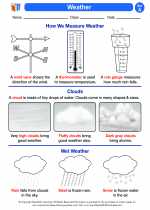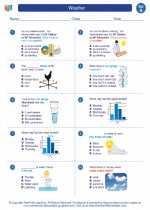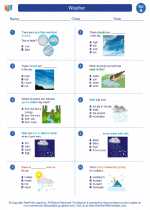What Causes Monsoons?
Monsoons are primarily caused by differential heating and cooling of land and sea. During the summer months, land areas heat up more quickly than the adjacent ocean, creating a low-pressure zone over the land. At the same time, the ocean retains its lower temperature and higher pressure. This temperature difference sets up a pressure gradient that drives moist air from the ocean onto the land, resulting in heavy rainfall. In the winter, the opposite occurs, with cool, dry air moving from the land to the ocean.Types of Monsoons
There are two main types of monsoons: the summer monsoon and the winter monsoon. The summer monsoon brings heavy rainfall and is associated with the wet season, while the winter monsoon is characterized by dry and cool conditions.Impact of Monsoons
Monsoons have a significant impact on agriculture, water resources, and overall climate patterns in the regions they affect. The timing and intensity of the monsoon rains can greatly influence crop yields and the availability of water for drinking and irrigation.Study Guide
To understand monsoons better, here are a few key concepts to study:- Causes of monsoons
- Factors influencing monsoon variability
- Impact of monsoons on agriculture and water resources
- Differences between summer and winter monsoons
◂Science Worksheets and Study Guides First Grade. Weather
Study Guide Weather
Weather  Activity Lesson
Activity Lesson Weather
Weather  Worksheet/Answer key
Worksheet/Answer key Weather
Weather  Worksheet/Answer key
Worksheet/Answer key Weather
Weather  Worksheet/Answer key
Worksheet/Answer key Weather
Weather  Worksheet/Answer key
Worksheet/Answer key Weather
Weather  Vocabulary/Answer key
Vocabulary/Answer key Weather
Weather  Vocabulary/Answer key
Vocabulary/Answer key Weather
Weather 

 Activity Lesson
Activity Lesson
 Worksheet/Answer key
Worksheet/Answer key
 Worksheet/Answer key
Worksheet/Answer key
 Worksheet/Answer key
Worksheet/Answer key
 Worksheet/Answer key
Worksheet/Answer key
 Vocabulary/Answer key
Vocabulary/Answer key
 Vocabulary/Answer key
Vocabulary/Answer key

The resources above cover the following skills:
Earth Systems Science
Earth's materials can be compared and classified based on their properties. Students can:
Identify and represent similarities and differences such as the texture, size, color, and shape of various materials on Earth